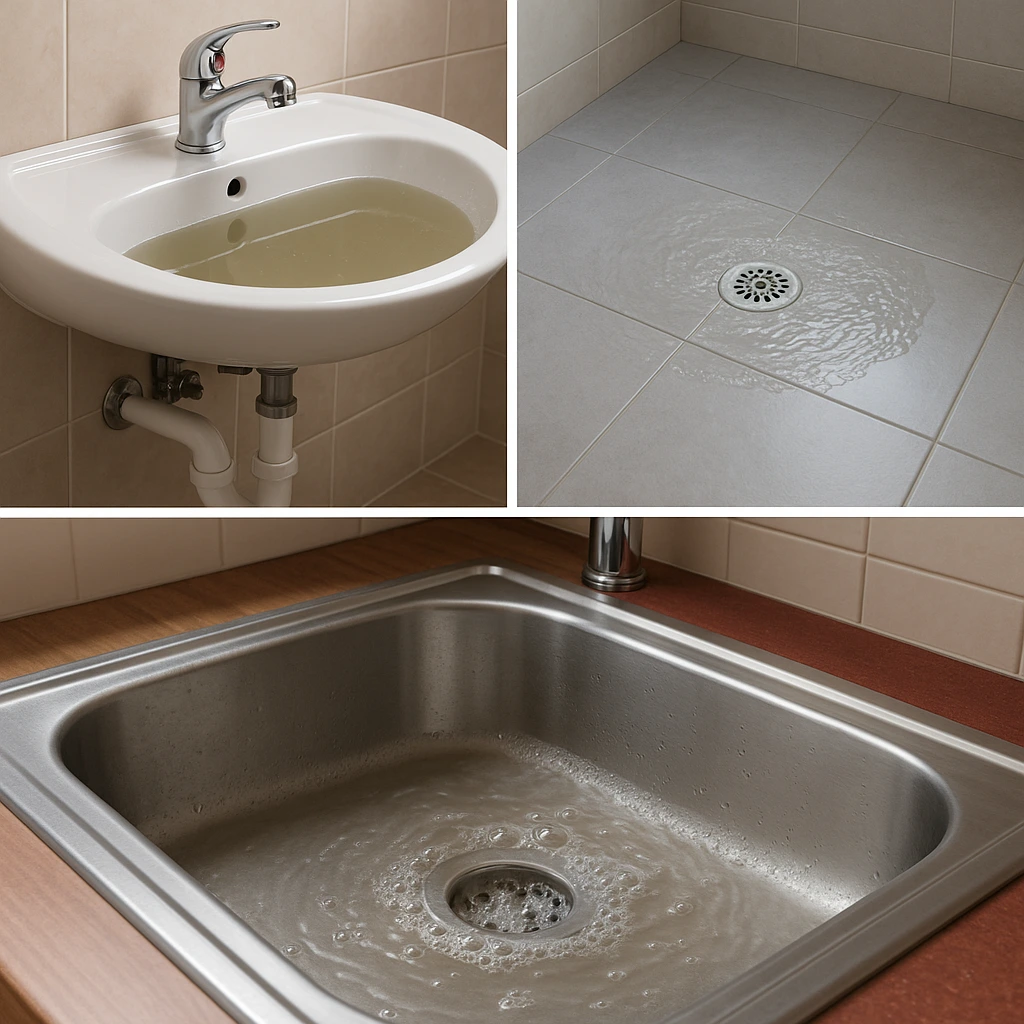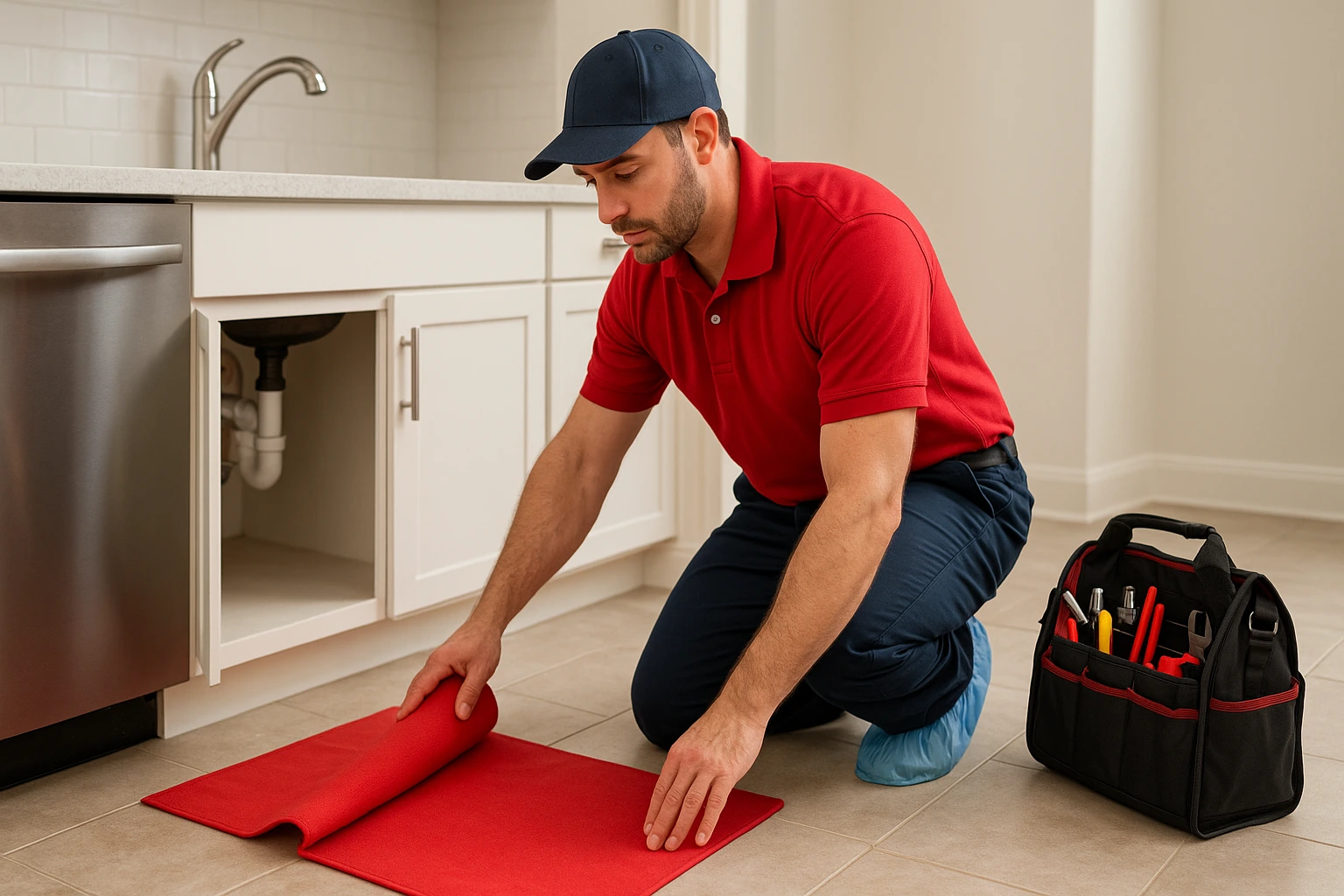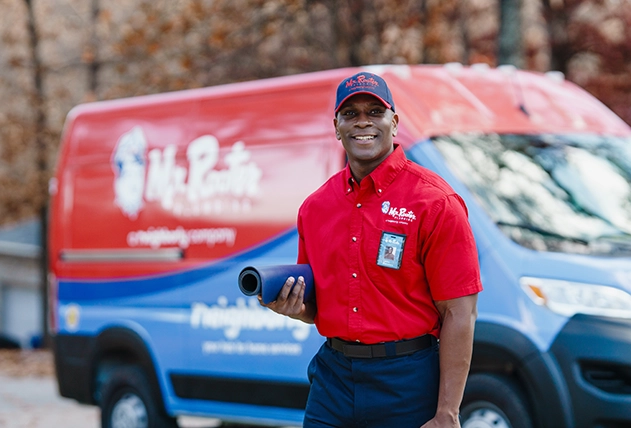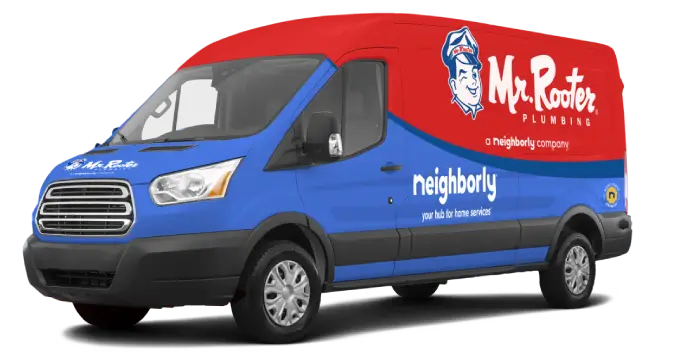Mr. Rooter explains the difference between drain clearing and drain cleaning:
For help diagnosing the issue, contact your local Mr. Rooter Plumbing® service professional. |
If water isn’t emptying from your sink, tub, or shower drain, the culprit is usually a clog, but there may be a deeper cause. Solutions may include drain clearing and drain cleaning. While they sound similar, these are actually different processes—and knowing the difference can save you time, money, and stress.
This guide breaks down the differences between drain cleaning and clearing, including what each service entails, when you might need them, the benefits of hydrojet drain cleaning, and when to call a professional.
What Is Drain Clearing?
Drain clearing is a fast and targeted solution for clearing blocked drains and restoring flow by removing an obstruction. It’s what most people try first when water isn’t draining the way it should.
Clearing a drain may require:
- A plunger to push pressure through a localized clog
- A drain snake or auger to physically break up a blockage
- Non-corrosive, chemical-free treatments to assist in clearing soft buildup
Because drain clearing doesn’t fully clean your pipes or address long-term buildup, it’s often used as a first step before attempting a more thorough drain cleaning.
What Is Drain Cleaning?
While drain clearing removes a specific clog, drain cleaning goes even further. Drain cleaning scrubs and cleans the entire length of your pipes to remove buildup, debris, and any other obstructions that may be inside. It’s a thorough service designed to prevent recurring issues, not just fix them when they happen.
While most clogs can be cleared with household tools, drain cleaning requires more specialized equipment. A professional drain clearing service may utilize:
- Hydrojet drain cleaning: High-pressure water blasts away grease, mineral deposits, soap scum, and even tree roots. In addition to effectively cleaning pipes, hydrojetting offers additional benefits for long-term pipe health.
- Video camera inspection: This process identifies buildup, corrosion, or obstructions inside the pipes.
- Cable machines: Rotating cables or mechanical cutters may be used to dislodge tougher, more stubborn blockages.
While clearing removes the blockage, cleaning removes the buildup that caused it—and helps prevent it from coming back. It’s about restoring full function to your drain system and helping prevent future backups.
How to Know If You Need Drain Clearing or Drain Cleaning
If you’re not sure which service your drains actually need, you’re not alone. It’s one of the most common questions we get from homeowners and business owners alike—and the answer often comes down to how your plumbing is behaving.
When basic drain clearing is enough
Drain clearing may do the trick if:
- One drain is clogged or draining slowly.
- The issue came on suddenly (from food scraps or hair).
- There’s no odor, gurgling, or backup in nearby drains.
- You’ve used a plunger or hand snake with some success.
These are everyday clogs; localized, recent, and typically simple to fix.
When you need full drain cleaning
Drain cleaning is likely the better solution if:
- Multiple drains are slow, bubbling, or backing up.
- You’ve already “cleared” the clog before—but it came back.
- There’s a persistent odor near the drain.
- Your home has older pipes or you suspect buildup in the system.
- You want a long-term solution, not just a quick fix.
These symptoms often point to a problem deeper within the drain system. In that case, hydrojet drain cleaning or a professional video inspection may be needed.
How Often Should You Schedule Professional Drain Cleaning?
For most homes, scheduling a drain cleaning once a year is a smart move. Even if your drains seem fine, annual professional drain cleaning helps remove hidden buildup, including grease, hair, soap scum, and mineral deposits. It’s preventative, not reactive. Think of it like a wellness check for your pipes.
Commercial properties and high-use homes (such as multi-family residences) may benefit from more frequent attention. A drain cleaning every 3 to 6 months can help businesses and large households stay ahead of recurring drainage issues.
Examples include:
- Restaurants and food prep spaces
- Salons, barbershops, or pet groomers
- Dental offices and medical clinics
- Daycares, rental homes, or shared housing setups
Drain cleaning isn’t just a quick fix: It’s a form of plumbing maintenance that helps prevent unexpected clogs, backups, and expensive damage.
Drain Clearing vs. Drain Cleaning at a Glance
Use this breakdown to compare the two services side by side:
| Feature | Drain Clearing | Drain Cleaning |
|---|---|---|
| Goal | Remove a specific clog | Clean the entire pipe system |
| Tools Used | Plunger, hand auger, drain snake | Hydrojetting, video camera, rotary cutters |
| Time Required | Usually under an hour | 1–2 hours or more |
| Best For | Sudden one-time blockages | Recurring clogs, buildup, or multiple slow drains |
| Longevity | Short-term fix | Long-lasting results |
| DIY Friendly? | Sometimes | No, requires professional tools and training |
| Risk of Recurrence | Higher | Lower |
How Mr. Rooter Plumbing Professionals Handle Drain Issues
Sometimes, a clogged drain is more than just a clog, and fixing it takes more than guesswork. At Mr. Rooter Plumbing®, we follow a clear, proven process to find the problem, explain your options, and get things flowing again.
We inspect before we act.
Our service professionals don’t start with assumptions—we start with answers. We’ll start with an assessment that may include:
- Video camera inspections to look inside your pipes in real time.
- Water pressure tests to spot signs of slow flow or deeper blockages.
- Visual checks for red flags like pipe corrosion, sludge, or root intrusion.
We explain your options.
Once we’ve pinpointed the issue, we’ll walk you through what we found—and what makes the most sense for your home or business. Whether you need a quick clearing or a full hydrojet drain cleaning, we’ll help you choose the best path forward.
We use professional tools you won’t find at home.
If a simple plunger won’t cut it, we’re equipped with:
- Motorized augers and cable machines.
- HydroScrub® Jetting systems for high-pressure cleaning.
- Pipe locators and video scopes to find hidden trouble early.
Learn more about our professional drain cleaning services and request your in-home estimate today.
Why Choose Mr. Rooter Plumbing for Drain Clearing and Cleaning Services
Now that you’ve learned the difference between drain clearing and drain cleaning, you know why choosing the right service matters. But just as important is choosing the right plumbing professional to do the job.
Here’s what sets Mr. Rooter apart:
- Upfront, surprise-free pricing: We offer flat-rate quotes and honest assessments before work begins.
- Trusted, local service: Every Mr. Rooter Plumbing location is independently owned and operated, providing personalized care backed by national standards.
- Expert tools and training: From hydrojet drain cleaning systems to video camera inspections, we bring the right equipment for the job.
- The Neighborly Done Right Promise®: Whatever the job, we ensure your complete satisfaction.
Whether you’re dealing with a blocked kitchen sink or need help clearing drain pipes in an older home, our service professionals are here to help. Contact your local Mr. Rooter Plumbing team today to get started.
This article is intended for general guidance only and is not applicable to every situation. You are responsible for determining the proper course of action for your property and situation. Mr. Rooter is not responsible for any damages that occur as a result of advice and/or guidance derived from its blog content. Some Mr. Rooter services vary by location. Contact your local Mr. Rooter franchise for more information.
FAQs About Drain Clearing vs. Drain Cleaning
Mr. Rooter Plumbing is a one-stop solution for all your plumbing service needs. Whether you need a pipe repaired, clogs cleared, or drains cleaned, you can count on our experienced team to get the job done right! Our commitment to exceptional service includes answering your questions. Here are answers to some of your most frequently asked questions on drain clearing vs. drain cleaning.
What’s the difference between drain clearing and drain cleaning?
Drain clearing removes a specific blockage—such as hair or food—from a slow or stopped drain using tools like augers or snakes. Drain cleaning goes deeper, clearing buildup throughout the pipe system using professional techniques, such as hydrojetting and video inspection.
Can I clear a clogged drain myself?
Yes, for simple blockages in a single fixture, a home plunger or hand auger can work. Avoid using chemical cleaners, as they can corrode pipes and often fail to address the underlying buildup.
DIY tips for basic clogs:
- Use a cup plunger (not a toilet plunger) on sinks or tub drains.
- Try a handheld drain snake for hair or small blockages.
- After loosening the clog, flush the drain with hot (not boiling) water.
- Skip harsh chemical drain cleaners, which can erode your pipes and damage seals.
How often should I schedule professional drain cleaning?
For most homes, scheduling a professional drain cleaning once a year is a smart maintenance practice. High-use homes and businesses, such as restaurants, salons, and rentals, may benefit from drain cleanings every 3 to 6 months. Regular cleanings help prevent recurring blockages while protecting your plumbing.
Will regular drain cleaning stop recurring clogs?
Yes, scheduled cleaning tackles grease, scale, and other sources of buildup before they narrow your pipes and cause repeated clogs or backups.
What’s hydrojet drain cleaning, and why is it effective?
Hydrojetting uses high-pressure water to scour the inside of drains, removing grease, scale, and roots. The chief benefit of hydrojetting is that it cleans beyond the surface clog, providing results that last longer.
Think your home or business could use a thorough drain cleaning? Learn more about the benefits of hydrojetting and consult a plumbing professional to get started.
How do plumbers inspect the inside of drains before cleaning?
Professionals use specialized drain cameras to view pipe interiors and diagnose problems like buildup, corrosion, or blockages. Visual inspections allow plumbers to avoid guesswork and inadequate solutions.
What kind of maintenance keeps drains flowing longer between cleanings?
Use sink strainers, avoid pouring grease or coffee grounds down drains, and flush with hot (not boiling) water regularly. These simple habits help reduce buildup and prolong clean waterways.




